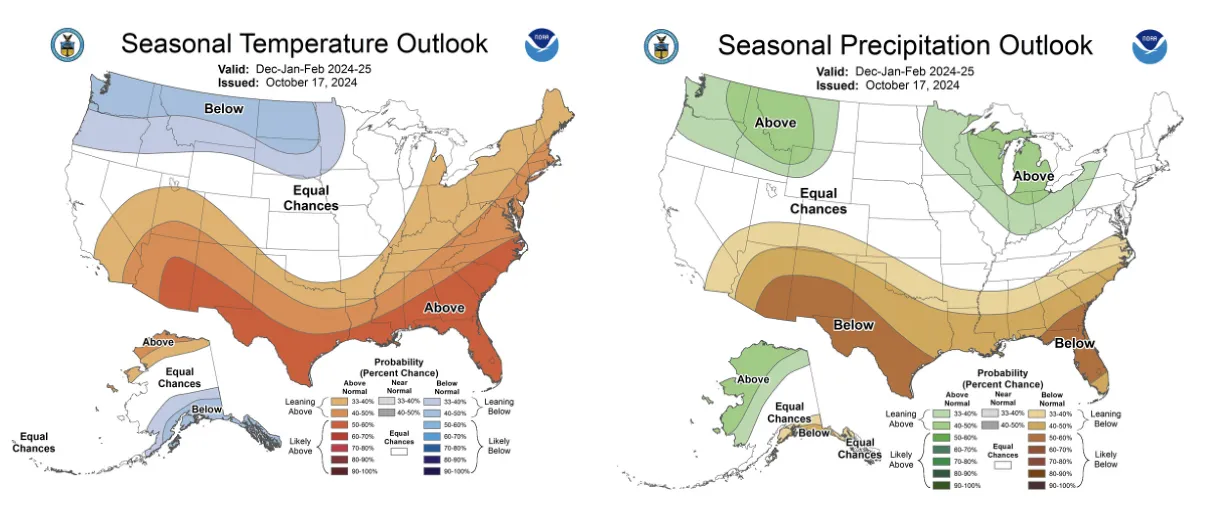November 19, 2024
Will this winter be as mild as last winter? Experts give national 2024-2025 outlook predictions.

The 2024-2025 winter outlook map shows the greatest chances for cooler conditions in the Pacific Northwest. (NOAA map via Dovers)
In most parts of the country, last year's winter was mild. So mild, in fact, Wisconsin snowmobile enthusiasts dubbed it the "lost winter" because there was so little snowfall, reports Cheyenne Kramer of Drovers. "But according to Eric Snodgrass, senior science fellow at Nutrien Ag Solutions, the consensus is that the months ahead are going to look a lot different."
Snodgrass believes that "this winter brings about a 75% chance for La Niña to develop, which is when the trade winds across the equatorial Pacific are strong. With La Niña in the forecast, the National Oceanic and Atmospheric Administration is predicting wet conditions in the north and dry, warm weather in the south," Kramer adds. "Department of Agriculture meteorologist Brad Rippey says La Niña can also bring chances for extreme cold events."
One of the gains agribusiness advocates hope to see this winter is enough moisture to balance regional droughts. Snodgrass told Kramer, "The best winters for agriculture are the ones we hate and remember as being terrible — we get good, hard freezes and plenty of moisture comes in. If we don’t see that, we get into a situation where we become very dependent on spring rains and may have a conversation about 2025 drought risk.”
The increase in droughts across southern U.S. tiers is worrisome, and this winter may not improve that problem. Northern areas are predicted to receive more moisture. Rippey told Kramer, "While much of the north will have the opportunity for relief from this growing drought. . . . We are expecting a generally warmer- and drier-than-normal winter across the entire southern tier of the United States. . . . That does include important winter wheat production areas in the southern Great Plains. There’s not much reserve right now in terms of soil moisture."
If rain and snowfall are to help drought regions, timing is everything. Rippey told Kramer, "It’s important to start getting moisture before it gets too cold. When you go into a cool season like this with limited soil moisture, if the cold air comes in too quickly, you freeze the soils before you get moisture, which can limit the absorption of rain and snow into those soils." Kramer adds, "the timing of when La Niña really starts to take effect will be important as well."